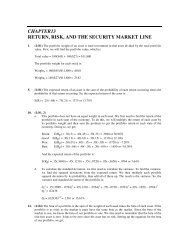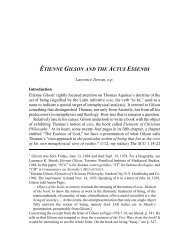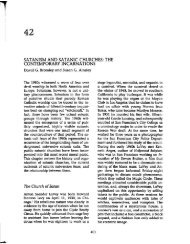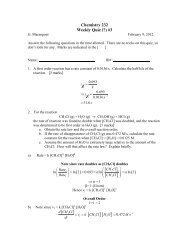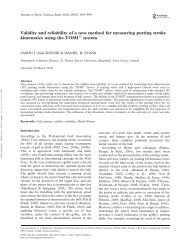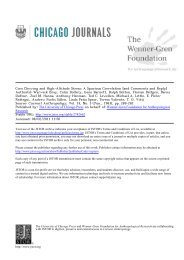Health and the Social Construction of Masculinity in Men's Health ...
Health and the Social Construction of Masculinity in Men's Health ...
Health and the Social Construction of Masculinity in Men's Health ...
Create successful ePaper yourself
Turn your PDF publications into a flip-book with our unique Google optimized e-Paper software.
32 MEN AND MASCULINITIES / July 2004<br />
behavior <strong>and</strong> health risks. Accord<strong>in</strong>g to Berger, Wallis, <strong>and</strong> Watson (1995,<br />
2), gender is articulated “through a variety <strong>of</strong> positions, languages, <strong>in</strong>stitutions<br />
<strong>and</strong> apparatuses,” <strong>and</strong> it is constructed from “a complex web <strong>of</strong> <strong>in</strong>fluences.”<br />
When it comes to health behavior, <strong>in</strong>fluences may <strong>in</strong>clude books,<br />
films, images on television, <strong>the</strong> advice <strong>of</strong> doctors, <strong>the</strong> comments or teas<strong>in</strong>g<strong>of</strong><br />
friends, <strong>and</strong>, quite recently for men, magaz<strong>in</strong>es.<br />
In December 2000, a magaz<strong>in</strong>e with a cover picture <strong>of</strong> a huge, muscular,<br />
male torso <strong>and</strong> <strong>the</strong> bold red letters “Build This Body!” was on <strong>the</strong> newsst<strong>and</strong>s.<br />
Men’s <strong>Health</strong> magaz<strong>in</strong>e has a circulation <strong>of</strong> approximately 1,650,000<br />
<strong>in</strong> <strong>the</strong> United States <strong>and</strong> more than twice that number <strong>in</strong>ternationally. It is provid<strong>in</strong>g<br />
for men what women have had for a very long time, that is, a lifestyle<br />
magaz<strong>in</strong>e that gives advice on every aspect <strong>of</strong> liv<strong>in</strong>g, from sex to shoes <strong>and</strong>,<br />
<strong>in</strong>cidentally, health.<br />
While <strong>the</strong>re is a large amount <strong>of</strong> fem<strong>in</strong>ist literature on <strong>the</strong> construction <strong>of</strong><br />
fem<strong>in</strong><strong>in</strong>ity <strong>in</strong> women’s magaz<strong>in</strong>es, <strong>the</strong> correspond<strong>in</strong>g literature on men’s<br />
magaz<strong>in</strong>es is limited <strong>and</strong> tends to focus on <strong>the</strong> construction <strong>of</strong> <strong>the</strong> male consumer<br />
(e.g., Greenfield, O’Connell, <strong>and</strong> Reid 1999; Breazeale 1994). The<br />
fem<strong>in</strong>ist analysis can, however, be extended to men’s magaz<strong>in</strong>es <strong>and</strong> is particularly<br />
applicable to men’s health magaz<strong>in</strong>es.<br />
Courtenay suggests that <strong>the</strong>re is a l<strong>in</strong>k between male power, <strong>the</strong> construction<br />
<strong>of</strong> mascul<strong>in</strong>ity, <strong>and</strong> unhealthy behavior, stat<strong>in</strong>g, “By successfully us<strong>in</strong>g<br />
unhealthy beliefs <strong>and</strong> behaviors to demonstrate idealized forms <strong>of</strong> mascul<strong>in</strong>ity,<br />
men are able to assume positions <strong>of</strong> power—relative to women <strong>and</strong> less<br />
powerful men—<strong>in</strong> a patriarchal society that rewards this accomplishment”<br />
(Courtenay 2000b, 1397).<br />
The idea that men act <strong>in</strong> ways that damage <strong>the</strong>ir health to ga<strong>in</strong> power <strong>and</strong><br />
privilege has pr<strong>of</strong>ound implications both for gender equality <strong>and</strong> for health<br />
promotion. This article focuses on <strong>the</strong> role that Men’s <strong>Health</strong> magaz<strong>in</strong>e plays<br />
<strong>in</strong> <strong>the</strong> mediation <strong>of</strong> mascul<strong>in</strong>ity <strong>and</strong> health behavior.<br />
MASCULINITY AND MALE POWER<br />
True mascul<strong>in</strong>ity, accord<strong>in</strong>g to Connell (1995, 45) is “almost always<br />
thought to proceed from men’s bodies.” It is <strong>the</strong>refore <strong>in</strong>timately l<strong>in</strong>ked with<br />
health, provid<strong>in</strong>g “<strong>the</strong> focal po<strong>in</strong>t <strong>of</strong> self-construction as well as health construction”<br />
(Saltonstall 1993, 12).<br />
However, mascul<strong>in</strong>ity is, as Berger, Wallis, <strong>and</strong> Watson (1995) describe, a<br />
“vexed term, variously <strong>in</strong>flected, multiply def<strong>in</strong>ed, not limited to straight forward<br />
descriptions <strong>of</strong> maleness” (p. 2). What is certa<strong>in</strong> is that “noth<strong>in</strong>g like<br />
one-way determ<strong>in</strong>ation <strong>of</strong> <strong>the</strong> social by <strong>the</strong> biological can be susta<strong>in</strong>ed”<br />
(Connell 1995, 47). Biological determ<strong>in</strong>ism, which sees gender differences<br />
as biologically based—<strong>and</strong> <strong>the</strong>refore natural, <strong>in</strong>evitable, <strong>and</strong> unchangeable—is<br />
an ideological position used to justify <strong>and</strong> perpetuate male power.In



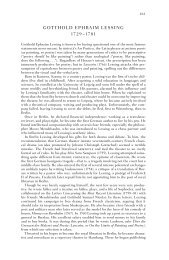
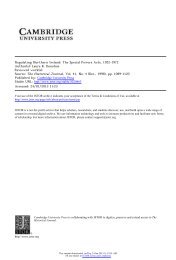


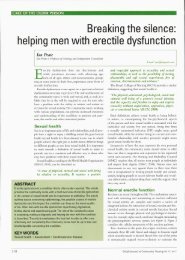
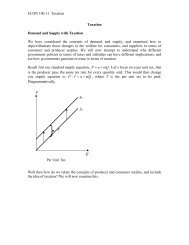
![The Rink - Cyril Dabydeen[1].pdf](https://img.yumpu.com/21946808/1/155x260/the-rink-cyril-dabydeen1pdf.jpg?quality=85)

